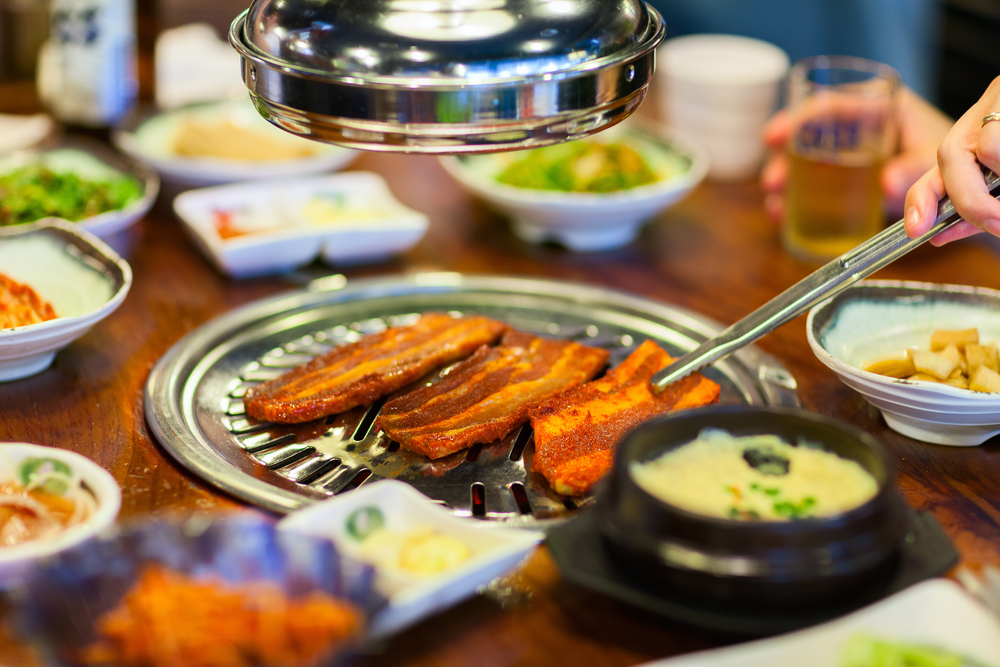Breaking
Unlike other Asian cuisines, Korean food woos Americans via the pantry, not restaurant menus
Everywhere you look, Korean food is screaming off the trend charts. Kimchee has become a household condiment. Korean barbecue is universally loved. Gochujang is about to have its heyday.
And we’ve seen this sort of thing before. Japanese cuisine was all the rage once, then Thai and Vietnamese, and regional Chinese is making a comeback, too. Except in the case of Korean food, it is playing out a bit differently. In the decade that Korean food has been inching its way into the spotlight, we haven’t seen a proliferation of Korean restaurants as we did with other Asian cuisines. I’d even argue that the mystery of Korean cuisine hasn’t even begun to be unpacked for mainstream America.
Rather, the rise of Korean food in America is driven by its pantry ingredients, not traditional restaurants. This is a different path from the other Asian cuisines that have been popularized in the West. One of the main reasons for this is because even though the cuisine of the homeland is complex and ritualistic, the ingredients are not. They made the leap pretty quickly into the American taste vernacular. In fact, the assimilation of Korean food happened so fast, we found our way to kimchee tacos faster than we did kimchi ji-gae (a traditional Korean stew).
It’s that same versatility that will define the future of Korean food in the U.S. The ingredients are already adapting to everything from burgers to poutine. And it’s not just here. In Seoul, where I have travelled frequently in recent years, the cuisine is rapidly morphing, too. The line between Western influences and traditional flavours is becoming less and less rigid. We don’t need to wait a generation anymore to discover the next incarnation of Korean food.
And that’s good — and delicious — for us. What is popular in Korea now is instantly translatable to the American table. The expanding Korean pantry is already here to entice an audience hungry for more umami and spice.
Now, I’ll grant you that sea squirt sashimi may never gain traction here. But jeotgal is something that can easily become an American staple. It is a category that denotes any fermented seafood. It can be anything from 40-day-old fish guts to a lighter, almost ceviche-like cold dish of oysters with chili and fish sauce. It is delicious as a condiment, added to a rice dish or served with fatty pork. And there are as many varieties as there are fish in the sea. My recipe is an introduction to the category: oysters in a lettuce wrap tempered by the richness of fatty pork sausage.
When we think of Korean ingredients, we think of fermented products. But there are also many fresh herbs and vegetables that are becoming more widely available. Teardrop or hachiya persimmons, chrysanthemum leaves and Asian pears are staples I see all the time now. One that is still rare but growing in popularity is perilla (sometimes called shiso). They are leaves from the sesame tree, and they are pungent, slightly minty and bitter all at the same time. Traditionally used as a wrap or fermented into kimchee, the leaves also make a delicious addition to salads (I’ve given you a recipe so you can test it for yourself).
Meanwhile, gochujang is the Korean ingredient Americans are most likely to encounter first. It is a fermented chili paste that is essential to many Korean dishes. It has yet to penetrate the typical household, but chefs have been using it for years to add depth to stews, glazes and marinades. Ssamjang is its more complex (and less spicy) brother. It is a seasoned dipping sauce made from gochujang, garlic, sesame oil and soybean paste. Typically it is used only as a condiment to barbecue, but it has so much more potential. I use it in gravy, in hummus, or just eat it with raw vegetables. And that is exactly why this sauce will gain in popularity here. Without the limiting blinders of tradition, American chefs will see it as a limitless pantry item.
And that’s the exciting part — watching these ingredients take on new roles. That’s when American cuisine is at its best. The misinterpretation of tradition can be a good thing, even essential. Because it often leads to new ones, those we can claim as our own.
Edward Lee is the chef/owner of multiple Louisville, Kentucky, restaurants, including 610 Magnolia and MilkWood. His first cookbook is “Smoke and Pickles.”






















